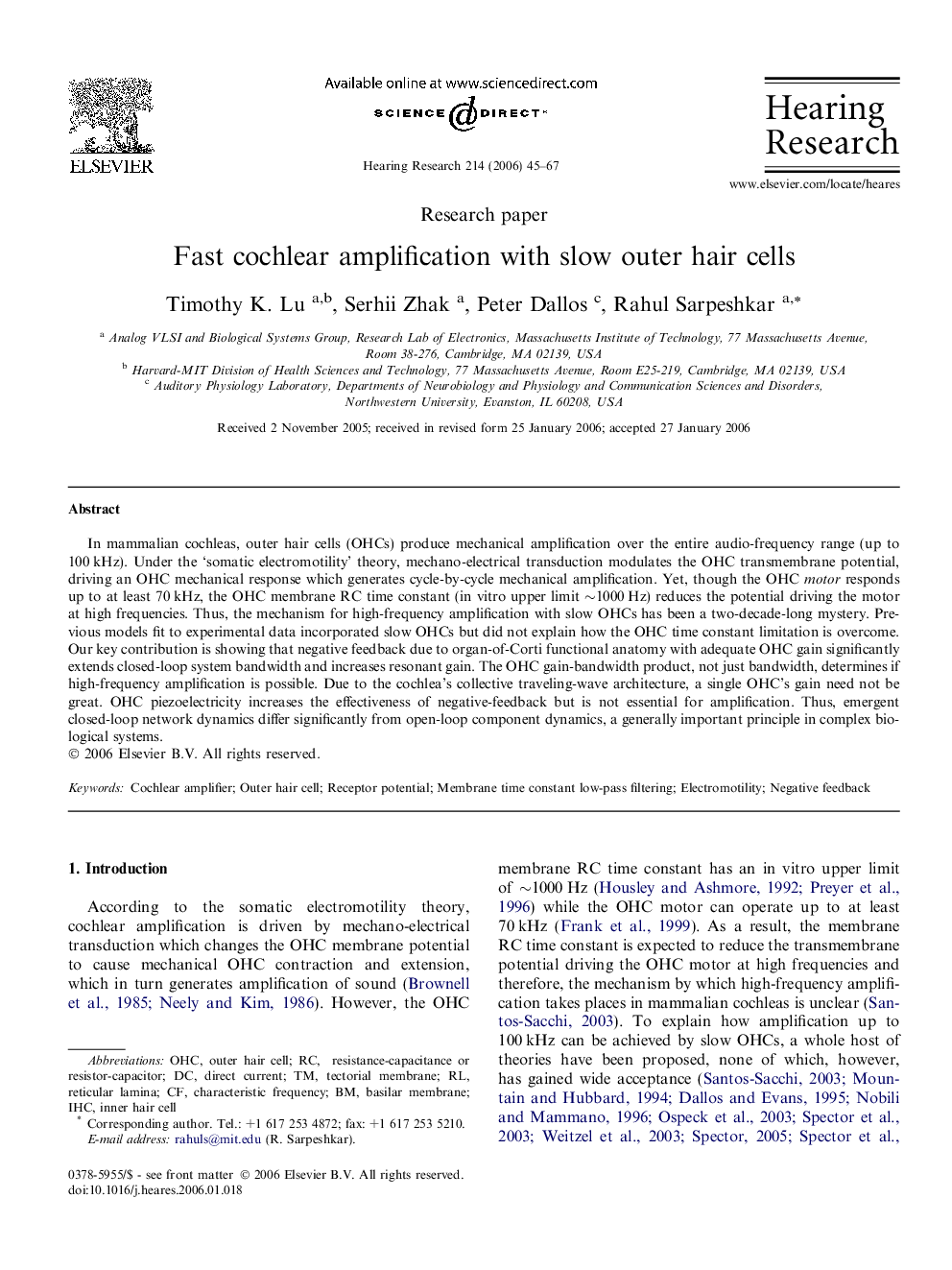| Article ID | Journal | Published Year | Pages | File Type |
|---|---|---|---|---|
| 4356414 | Hearing Research | 2006 | 23 Pages |
Abstract
In mammalian cochleas, outer hair cells (OHCs) produce mechanical amplification over the entire audio-frequency range (up to 100Â kHz). Under the 'somatic electromotility' theory, mechano-electrical transduction modulates the OHC transmembrane potential, driving an OHC mechanical response which generates cycle-by-cycle mechanical amplification. Yet, though the OHC motor responds up to at least 70Â kHz, the OHC membrane RC time constant (in vitro upper limit â¼1000Â Hz) reduces the potential driving the motor at high frequencies. Thus, the mechanism for high-frequency amplification with slow OHCs has been a two-decade-long mystery. Previous models fit to experimental data incorporated slow OHCs but did not explain how the OHC time constant limitation is overcome. Our key contribution is showing that negative feedback due to organ-of-Corti functional anatomy with adequate OHC gain significantly extends closed-loop system bandwidth and increases resonant gain. The OHC gain-bandwidth product, not just bandwidth, determines if high-frequency amplification is possible. Due to the cochlea's collective traveling-wave architecture, a single OHC's gain need not be great. OHC piezoelectricity increases the effectiveness of negative-feedback but is not essential for amplification. Thus, emergent closed-loop network dynamics differ significantly from open-loop component dynamics, a generally important principle in complex biological systems.
Keywords
Related Topics
Life Sciences
Neuroscience
Sensory Systems
Authors
Timothy K. Lu, Serhii Zhak, Peter Dallos, Rahul Sarpeshkar,
